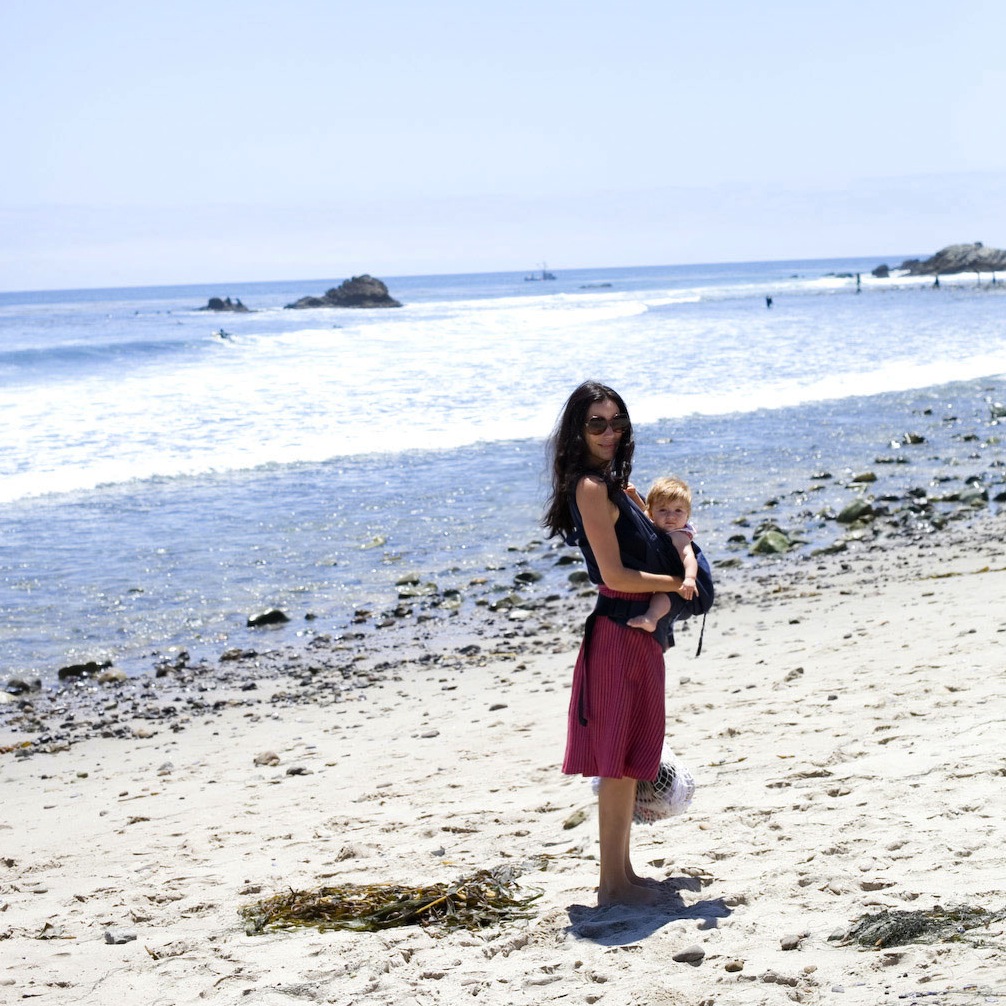
For parents who carry their little one in a sling or a carrier, sunscreen is not a choice – it’s a must. Although the sleeping hood on the Ergobaby baby carrier has 50+ UPF protection, frequent babywearing parents should still take care to properly protect their little peanuts from sunburn.
Don’t let the thought of sun exposure dissuade you from wearing your baby as much as possible. Holding your baby in a carrier provides security for babies as they experience the familiar sensations they had in the womb like hearing your voice, feeling your heartbeat and your rhythmic breathing. Many moms also like being able to quickly respond to their baby’s cries and the benefits of increased eye-to-eye contact when carrying baby so closely.
Sunshine and outdoor time are wonderful things for young children, but too much of a good thing can have adverse effects on skin of any age. As much as 80% of lifetime sun exposure occurs before the age of 18. A great deal of the UV exposure we receive comes from reflected light off the ground and other objects. This means a hat or canopy over a baby may not be enough protection.
There are two types of UV rays that cause damage to our skin. UVA rays are the ones that cause aging and UVB rays are the ones that cause skin to burn. Using a broad-spectrum sunscreen means you are protecting your skin from both of these types of rays. Choose a lightweight and non-greasy product with ingredients like organic green tea to keep skin cool and offset and prevent UV damage. The safest choice is sun protection with ingredients that add value to the human body by providing extra nutrients, vitamins and minerals and are derived from plant sources.
Know your ingredient labels and avoid artificial fragrances, parabens, phthalates, phenoxyethanol, petroleum byproducts or other harsh chemicals. These can be present even in baby products that say “all natural” on them. You’ll also want to steer clear of synthetic chemicals with unrecognizable names like octinoxate.
Chemical-based sunscreens work by absorbing into the skin and should be avoided by everyone, especially babies. Not only do these chemicals force the baby’s organs to work extra hard to eliminate them, many of them are estrogen mimickers that may cause hormonal developmental problems in young children. Opt for a block that uses surface floating minerals like zinc or titanium as opposed to those absorbed by the skin. It is also okay to use sunscreen just on baby’s exposed parts like the face and backs of the hands. Sunscreen should be used on babies any time they are exposed to the sun. The American Academy of Pediatrics recommends this, even for babies under 6 months.
Developing a daily routine to protect your baby from the sun’s damaging ultraviolet rays can reduce the risk of developing skin cancer later in life and prevent the possibility of getting a painful sunburn. Pain is the body’s message to us that something is wrong. Sunburn and sun overexposure significantly reduce the body’s immune system. Frequent reapplication is always crucial when spending extended time outdoors. Reapply sunscreen at least every two hours. Any contact with water, clothing, drool, or feedings can reduce the amount of protection your baby is getting from sunscreen.
photo credit: Bonnie Tsang
Even though Summer is almost over, it’s still important to use sunscreen year-round on baby’s delicate skin when out and about babywearing!






